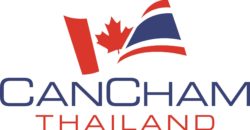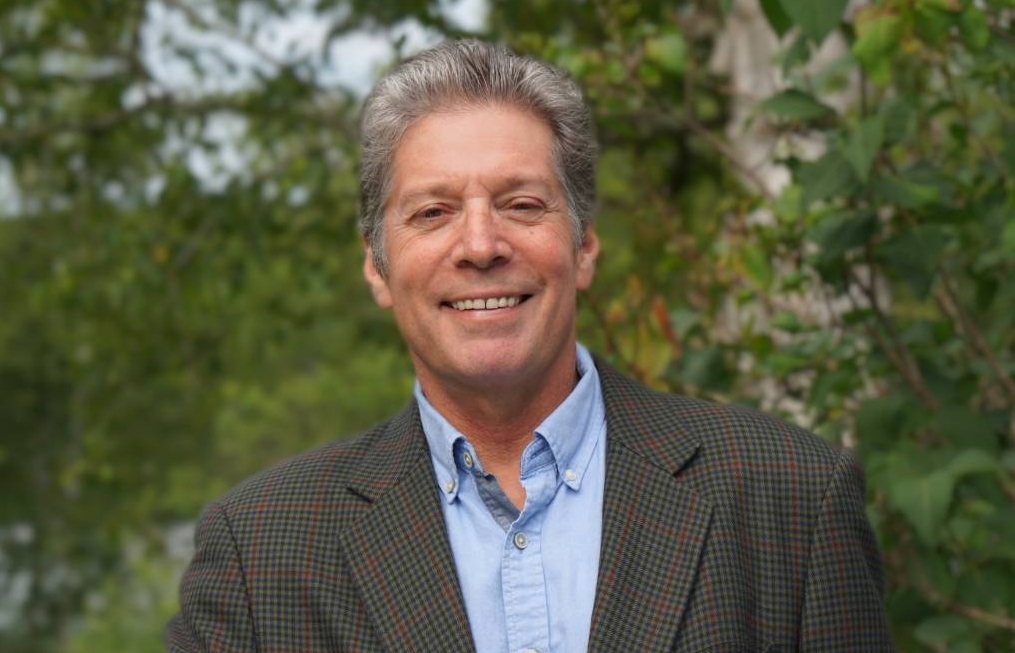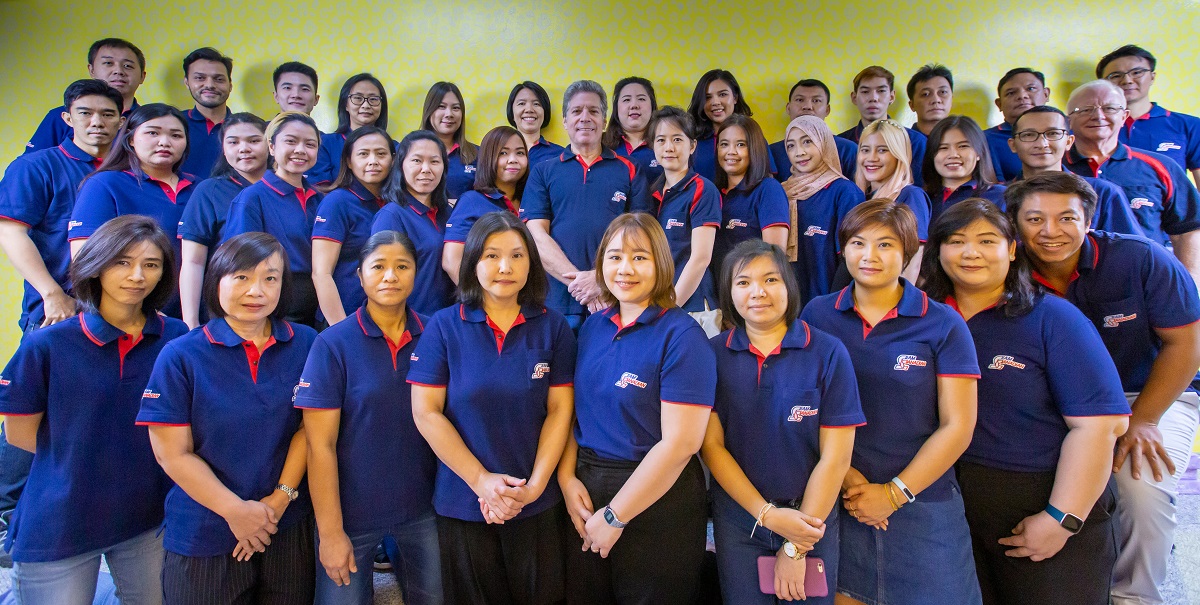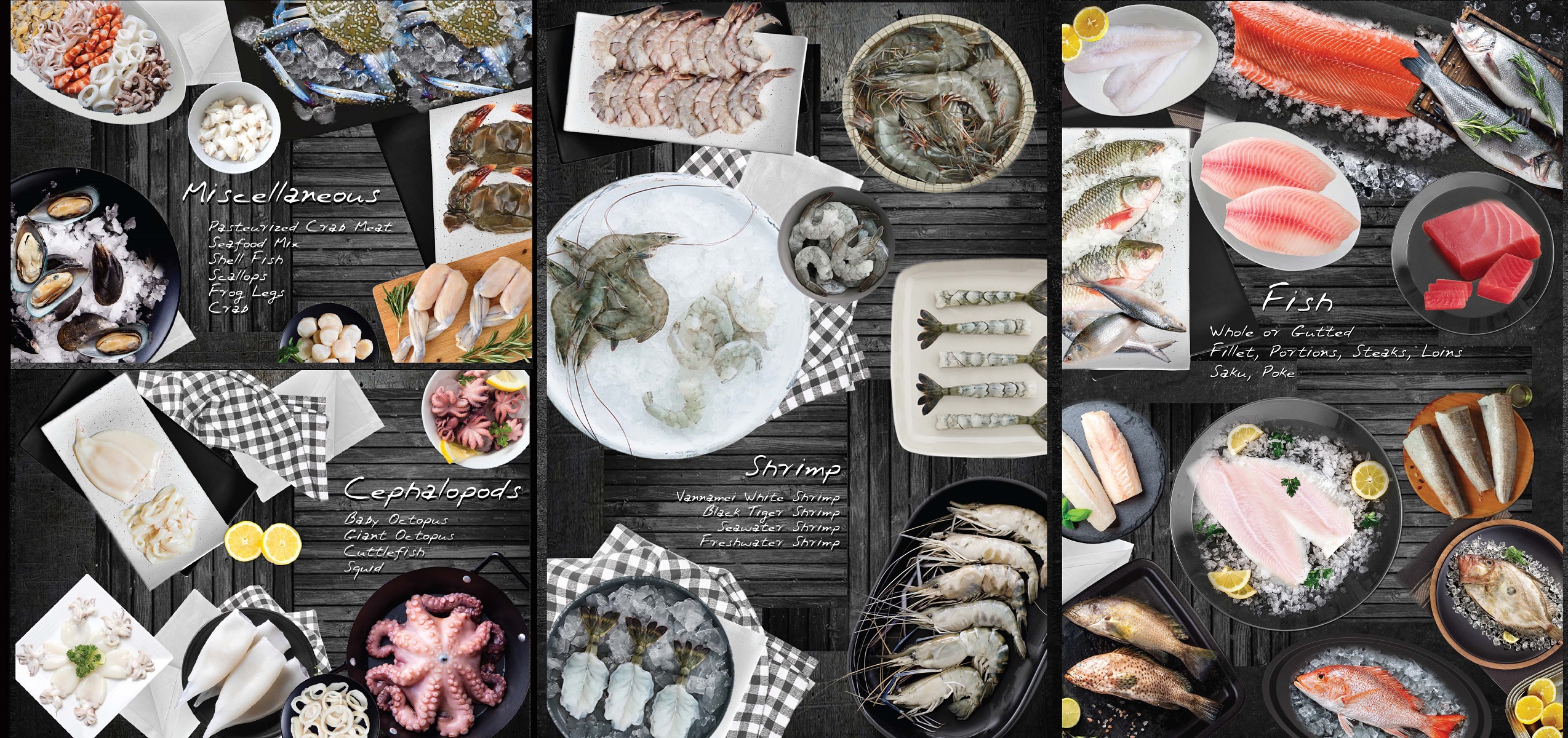
Exclusive Interview with Jim Gulkin: Founder and Group Managing Director of Siam Canadian

Samantha Rae Harriss: CanCham Thailand
Siam Canadian, established in Thailand in 1987 as a trading company and service provider in a variety of food products, has grown over the years into a major global seafood provider generating around $300 million in revenue annually. Read on to learn more about Canadian Jim Gulkin’s experience kickstarting Siam Canadian in Thailand.
What is Siam Canadian’s history?
I started the company in 1987. I had been in Asia for some years already, working in the oilfields in Indonesia and then in the Persian Gulf, but in 1986 I decided I wanted to do something different. I had been coming to Thailand on a regular basis during my time off, and decided I would try to start a business in Thailand. I wasn’t sure what business to start at first, and I didn’t have any business experience since I was a field technician; no education or experience or anything in terms of business, so I looked for different opportunities. I thought Thailand was a good place; I had spent time in other countries in Asia such as the Philippines, Indonesia, and Singapore, but I liked Thailand the most. Thailand was the most comfortable for me and the most interesting, and it seemed that there were more opportunities for me there than in other countries.
I investigated what things I might or might not do—this is back in 86—and fast food franchising was taking off in the world so I looked at that possibility, however I quickly realized I didn’t have enough money to do that. I had been working for an oilfield service company called Schlumberger for seven years, in Indonesia, Singapore, and the Persian Gulf, so I had a little bit of money saved up but not enough to make a go at something like a fast food business. I started looking at what products I could possibly import into Thailand and thought about trading, and while I was in that process I started realizing that Thailand was exporting a lot of products.
I built up a list of thousands of different products, not really knowing where to start. I went to Canada for a few months in early 1987 and started looking for products to buy and sell in Thailand, and I realized that the most common product that people were buying at that time from Thailand were food products.
Then I went back to Thailand and started to focus on trading, particularly food products. I made the rounds of suppliers in Thailand and talked to many different potential importers. Eventually I started to get a little bit of traction; I made a couple of sales and I started to learn how the business works, and the business started to grow. I started to market it, sending out brochures, getting lists of potential importers in different countries, expanding the product range, and going to trade fairs. It wasn’t a big business but it was gaining some momentum, and it seemed that there was potential that it might work. At that time the seafood industry was taking off in Thailand; Thailand was becoming a major producer of cultured shrimp so I started to look at that. That quickly became the main focus of Siam Canadian: shrimp and other frozen seafood products from Thailand.
Around 1990 I was not sure whether the business was going to survive or not, because I had pretty much run out of my safety net that I had built up working in the oilfield. Around that time, the future of the company was looking a little bit dodgy, but then the seafood business kicked in and things started to look a little bit better. Around 1991 I decided to see which other countries I could supply products from, so I opened an office in Vietnam. Meanwhile, the business in Thailand was growing and it was clearly becoming successful. Subsequently we opened offices in Myanmar, China, India, and Indonesia, and the business built up to where we are today.
We have since changed a lot of the things we do. We are not just a trading company or service provider anymore, we also have an import distribution business in Thailand and China. We are starting one in Vietnam, have opened an office in South America, we are creating a lot of different products with lots of trading between our different global offices. Our biggest markets are the United States and Canada, but we do a lot of business now between our offices in Asia as well as South America and with our regular markets in Europe, the Middle East, Africa, and Australasia. Siam Canadian is continuing to grow after 35 years, and we are trying to not only become more of an importer and distributor in certain countries like we do in Thailand, but also continue to expand. Right now, our gross sales are running around $300 million a year, with offices now in Thailand, Vietnam, Indonesia, India, and Myanmar. We also have a meat business which is headquartered and based in Poland; we have another trader based in Spain, we have an office in Argentina, and so we have a growing range of products and a growing range of business models.
What drew you to Thailand specifically?
I came over to Asia as a backpacker in 1979 and I traveled around Asia for about a year before ending up in Singapore at the end of 1979 without any money. I had worked in oil drilling rigs in Alberta in 1977 and 1978, so I had a little bit of oilfield experience already and managed to get myself a job there with a French oilfield service company. I worked out of Singapore and worked in Indonesia, Brunei, and Malaysia, so I had spent a lot of time in different countries in Asia. I arrived after my 21st birthday, so I’ve spent my entire adult life in Asia, and it seems to have worked out okay. Of all the countries, Thailand seemed the most comfortable for me, the most interesting, and it seemed to have the most opportunity for business or whatever I wanted to do so that is where I ended up.
How has the Covid-19 pandemic affected the business’ supply chains?
It varies from country to country, but in terms of the supply chain, it surprisingly did not affect us too much, except last year India was hit hard because they could not move product around the country with the lockdowns. Thailand and Vietnam were not really affected; Indonesia was affected to a degree, and South America was definitely affected. Overall though, our business was strong last year, so I guess we got lucky. Certain sectors of the business are stronger than ever right now… for example retail in the seafood industry is stronger than it has ever been because people are not going to restaurants. The retail business grew tremendously, and that is our main business channel. People who traditionally would not eat seafood at home stopped going to restaurants with the onset of Covid-19, and so people started increasingly buying seafood in the supermarkets or online. People have become accustomed to preparing seafood at home, so that sector of our business grew- which made up for the shortfall of the other business we do, food service. Food service is our product that goes into restaurants, hotels, theme parks, casinos, and so on where people go out to eat. Last year we had a very good year business-wise, and this year we are doing very well as well, but Covid is ultimately a horrible aggravation to everyone, impacting many other industries, the economy, and people around the world significantly.
What were the biggest challenges you had to overcome when starting your business?
Figuring everything out, because I had no clue what I was doing. I never went to university; I completed high school, travelled in Africa after, came back to Canada to work in the oil field, and then I travelled in Asia so I did not have any education or experience that would be relevant. I was trying to start from nothing, and part of the problem when you are starting from nothing is in order to do business, people have to have a certain level of confidence in you. If you have no idea what you are talking about, people do not want to talk to you. You can tell in 5 minutes if someone knows what they are talking about, and in the beginning it was clear that I did not know what I was talking about. However I am a quick study, so I figured things out quick enough, learning the language of business within a reasonably short time frame so I at least sounded like I knew what I was talking about. I was making stuff up as I went along, but eventually you make stuff up for a while and then you actually figure it out; you learn what you’re talking about. That was a challenge for sure.
Trying to start a business in Thailand was also a challenge. I am not Thai; I speak Thai reasonably well, but at that time it was not at a level where I could be entirely comfortable. Also, I am a foreigner, I am a “farang”. I was young at the time, 26 or 27 years old, coming into offices wanting to do business but I did not appear to have any experience or any business in hand and did not appear to really know what I was talking about; this creates the problem of trying to get people to listen to you and spend enough time to take you seriously. You have to be persistent and eventually you get some traction, a little breakthrough; a deal is made, and the guy you did the deal with says ‘okay, you can do business, you can put something together, so I want to take you more seriously and give you more of my time and see what you can do’.
What are you most proud of?
Starting something from scratch, and then having a business that continues after 35 years with a very bright future. I have continually tried to re-invent, so we have offices in eight countries, we have roughly 140 employees, and we generate $300 million a year in sales, so it’s a successful business. I contribute to the economies of the countries where we trade from, which is a positive contribution to society, to communities, to business—that is a good thing. I’ve got a successful business; we are continually expanding and looking to do different things, and I’ve got the right people on my side to do it.

What advice would you give to a foreigner starting a business in a different country?
One of my advantages was that I did not have any business education or advice. A lot of people might have said ‘that is going to be difficult, I don’t know how you are going to do that’, but I had nobody telling me that, so I thought everything is possible. In fact, most things are possible- not everything but most, or more things than anybody would imagine. If there were too many people looking out for my best interest and saying ‘how is that going to work? How are you going to manage that?’, I would have been discouraged from the beginning. When I started the business, I thought it was not working because I was not smart enough or was not making the right moves; I never thought it was not working because it was a bad idea or was not feasible. I just pushed myself harder.
Do not listen to naysayers—listen to common sense. Do not listen to too much negativity, listen to yourself. You have to have a certain level of self-confidence, and that also if you have a certain level of self-confidence, that projects. Even when you don’t know what you’re talking about, people will listen, so don’t listen to naysayers. Do something within a realm of reasonable common sense, but do not sell yourself short. Everything is limited, but not that limited—many things are possible.
Is there anything that you wish you would’ve known before your business journey started?
Definitely. I am a bit of a knucklehead and rigid in my thinking, although I am less rigid now than at the beginning. Do not think you know everything, because as time goes on you realize how little you really know. Once you realize that, you open up to everything. When you go into a different culture you can’t be judgmental, because what they do is what they do. That is them, and you are you, and some of the things you do other people think are ridiculous or do not make sense. For a long time, I always thought that Western culture has common sense and seriousness, but Covid has shown me that that is not true; I am always learning.
Beyond that, whatever culture you’re doing business with, maybe the way they do business and the way that they think about things is just different than the way you think about them. You can say that it does not make sense or you do not agree with it, but if you don’t accept it, you cannot do business. If the way somebody is doing business in China, or Ecuador, or Brazil, or Canada, or New Zealand, or wherever is different from what you do, like it or don’t like it, if you cannot accept it you cannot do anything, so accept it and work with it. As ridiculous some things may seem, they are what they are, so go with the flow.
What is in store for Siam Canadian in the future?
We are looking to the future now—as I said we are moving towards import distribution, which is a big step, it is very different from what we have been doing. We have a very successful import distribution business in Thailand, and we opened one in China a few years ago. We are also starting up an import distribution business in Vietnam; we opened a company there and will probably do the same in other countries as well. We have an e-commerce site which we just started in Thailand, so we are trying to figure that out. Things have changed, with e-commerce and cloud kitchens and everything; we are starting up our own Cloud Kitchen in Thailand set to launch later this year, and we are currently also launching our own brand of plant-based alternative meat and seafood products later this year called ‘Meatoo’. The traditional way business is being done is changing, and if we’re going to survive and prosper we have to change too, and that is what we are doing. Ultimately, we are trying to stay ahead of the curve, and are focused on keeping our business dynamic and relevant.

CanCham Thailand (Thai-Canadian Chamber of Commerce)
139 Pan Road, Sethiwan Tower, 9th floor, Bangkok 10500, Thailand
Phone: +66 (0) 2 266 6085-6 | Fax: +66 (0) 2 266 6087| info@canchamthailand.org



